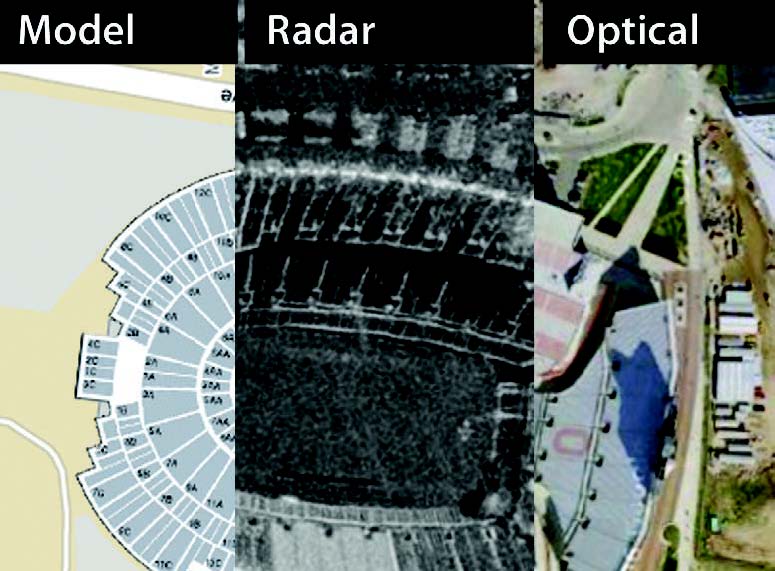left: Illustrating various examples of surveillance mediums, Ohio Stadium is depicted here as a line drawing, a radar image and an optical image. The Ohio Supercomputer Center's Alan Chalker serves as the program manager for the Center for Surveillance Research, a collaborative effort of academia, government and industry to conduct pre-competitive research and student training.
The Center for Surveillance Research (CSR), a National Science Foundation Industry/ University Cooperative Research Center, is a collaborative effort by academia, government and industry to conduct pre-competitive research and student training. Surveillance and situational awareness are critical technologies needed to address societal needs of safety and security, providing international and homeland security, situational awareness for disaster mitigation/management and environmental monitoring.
The key to addressing these crucial issues lies in the effective use of sensors and sensor systems. While individual sensor technology is advancing, there is a compelling need to understand composite surveillance systems. The challenge is to design quantitative tools that aid in designing surveillance systems to achieve particular inference goals and to develop a theory for predicting surveillance performance.
CSR’s scientific research program addresses the breadth and depth of surveillance science. The core disciplines include sensor exploitation, signature prediction, computation and functional baseline descriptions. Performance prediction and uncertainty characterization accompany every level (signal, feature, detection, localization, tracking, targeting and intent).
The Ohio Supercomputer Center (OSC) supports the center in several ways, including through its management of an online repository of information for all members. This information is made available through a secure site hosted by the Air Force Research Laboratory at Wright-Patterson Air Force Base.
“We archive data, code and other vital information generated by researchers working on CSR projects,” said Alan Chalker, Ph.D., program manager for CSR and for computer science engineering research applications at OSC. “A staff member catalogues scientific papers on related topics, annotates complex algorithms and adds commentary to various sections of code so that students and researchers new to a project can pick up where someone else left off. OSC also provides industry members with easy access to center materials.”
CSR operates at two university sites: The Ohio State University (under center director Lee Potter, Ph.D., associate professor of electrical and computer engineering) and Wright State University (under site director Brian Rigling, Ph.D., associate professor of electrical engineering). OSU has strengths in video surveillance, machine learning, distributed sensor networks, hyper-spectral imaging, radar image exploitation, human factors and multi-sensor integration. Wright State University brings expertise in information theory for automated threat recognition, terahertz imaging and radar system design — including waveform diversity and bistatic/ multistatic systems.
--
Project lead: Alan Chalker, Ohio Supercomputer Center
Research title: Center for Surveillance Research
Funding source: National Science Foundation
Web site: csr.osu.edu/index.html
